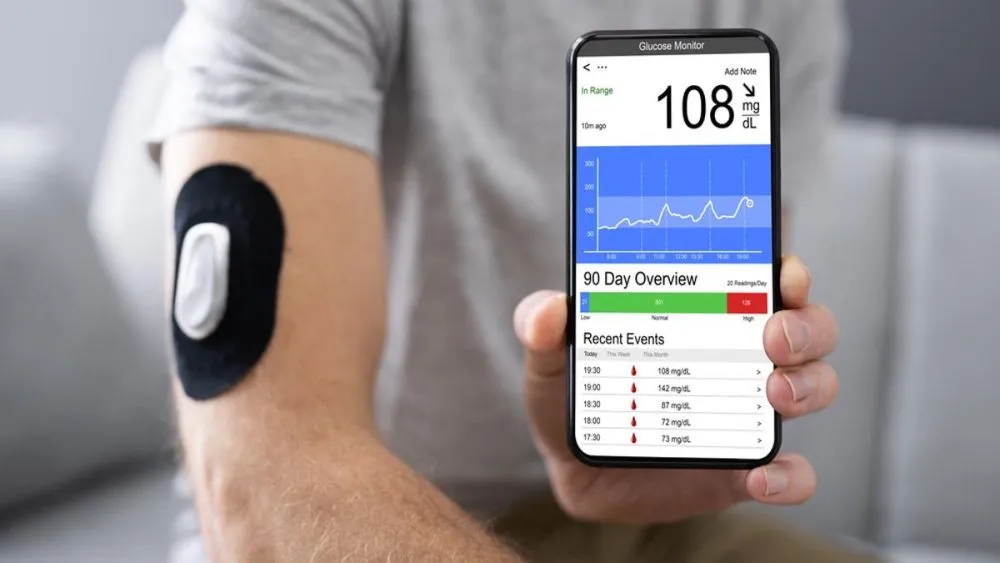At the very outset, let us understand different types of diabetes and the implications of ignoring this ailment. There are three types of diabetes: type-1, type-2, and gestational. While type-1 diabetes typically affects kids and younger folks, type-2 results from a destructive lifestyle, stress, family history, and poor diet. On the other hand, gestational is a temporary form of diabetes that affects certain pregnant women. If left untreated, diabetes can result in nerve damage, organ failure, tissue damage, vision loss, etc. Therefore, It is a good idea to have a handy glucometer because blood sugar monitoring is also essential, along with medicines/drugs.
People with diabetes can choose from three distinct monitoring methods: lab, glucometers, and Continuous Glucose Monitoring devices. This blog is not about labs or lab testing, so we will only discuss CGMs and Glucometers.

Introduction – Understanding Blood Glucose Monitoring Systems
There are two types of Blood Glucose Monitoring Systems. The most common and omnipresent is the glucometer. This device needs a test strip, a lancet to prick the finger and draw a drop of blood, and a device that covers the electrical data/signals. On the other hand, a continuous glucose monitoring device is a small gadget that can be attached ( pierced ) to the arm or belly. The sensor attached to the pin communicates with an app/software through a wireless transmitter, sending readings at regular intervals.
CGM Explained – Advantages and Features of Continuous Glucose Monitoring
As mentioned above, a continuous glucose monitoring system is a painless way of monitoring blood sugar levels frequently. A perfect example would be type-1 diabetes and type-2 diabetes, who experience frequent blood sugar upheavals. Apart from being painless (only a single prick is required), it offers a fantastic set of data that can be assessed by your primary care professional online. The CGM device also provides frequent readings, which the patient can manually set. Any unusual spikes can be addressed quickly, and the culprit narrowed down. One of its life-saving features includes an alarm. Anytime your sugar level goes up or down, the device beeps.
Glucometers Unveiled – How Traditional Blood Glucose Meters Work
These devices have remained unchanged over the last decade. The heart of traditional Blood Glucose Meters is the glucometer test strips. This is where the magic, the action, takes place. Once the finger is pricked and a drop of blood drawn/positioned on the strip, its other end is inserted into the portable device. The blood reacts with the glucose oxidase on the strip, producing gluconic acid. This information is passed to the terminals attached to the far end, creating electrical impulses/currents. The glucometer then measures this current, which varies depending on the value of gluconic acid produced. The device then converts the “electrical current” marker into blood glucose level.
Accuracy and Precision – Comparing CGM and Glucometer Readings
You must understand that continuous glucose monitoring technology uses interstitial fluid between the skin cells. Therefore, there is bound to be a delay in recording the “Real-time” changes. For example, you test blood glucose levels immediately after a workout. In that case, it may not show any changes because the interstitial fluid (cells in your tissues) has not changed structurally. The changes in blood sugar levels take time to show up in the interstitial fluid and, thereby, on the CGM device.
Ease of Use and Convenience – Which System Fits Your Lifestyle?
More than the lifestyle equation, the choice actually depends on the status of your diabetes. For example, if your type-2 diabetes is becoming unmanageable, and you cannot pinpoint the reason/s for frequent spikes or falls, then CGM makes sense. However, if you have managed to tame your blood sugar level or reversed it completely and now need to monitor it occasionally, then traditional glucometers are a fine option. You also need to understand that a continuous glucose monitoring device works for 14 days before it expires, while a traditional device exploits blood glucose strips. It also requires a finger prick each time.
Cost Considerations – Comparing the Financial Aspects of CGM and Glucometers
The cost factor is meaningless when patients cannot opt for a continuous glucose monitoring system. However, CGM is a perfect alternative for those tired of frequent finger pricks or fear of regular pokes. Of course, the cost difference between the two is massive. While traditional devices cost below Rs 1000 and come bundled with at least 100 test strips, continuous glucose monitoring will cost upwards of Rs 5,000 (14-day program) to Rs 25,000 (for a 6-month program).
Frequent Monitoring vs. Less Intrusive Testing – Finding Your Comfort Zone
Frequent monitoring can be tiring and painful even if the best sugar test machine is used. Moreover, carrying the blood glucose monitoring toolkit everywhere and using it can be daunting, especially when you are on the move. The least disruptive or invasive way is a continuous glucose monitoring system. Your choice will ultimately depend on the economics, comfort level, and doctor’s advice.
Hypoglycemia and Hyperglycemia Detection – CGM’s Added Safety Benefits
One needs to understand that a couple of malfunctions cause diabetes. Either the pancreas cannot produce enough insulin, or the cells in the body do not respond to this insulin (insulin resistance). The irony is diabetes can also fluctuate between hypoglycemia and hyperglycemia because of the consumption of drugs/insulin, change/s in diet, or initiating workouts. In such a scenario, continuous glucose monitoring devices play an important role. It sets off an alarm every time your sugar levels increase or decrease.
Data Management and Interpretation – Making the Most of Glucose Readings
CGM devices churn out several data pointers. While some of them are easy to interpret, there are others that are generated by built-in algorithms, which can be a little difficult to understand. The good news is this information is sharable. Your primary health caretaker can receive your diabetes-related data through an app/software and reconcile it at their end. This makes Data Management and Interpretation hassle-free.
Combining Both Technologies – The Hybrid Approach to Blood Glucose Monitoring
Although your doctor is the final authority on recommending the right Blood Glucose Monitoring system, as a patient, you can tweak your monitoring expenses by imbibing both technologies. However, this needs to be initiated after consulting your healthcare professional. By combining both technologies, you can reduce expenses and painful finger-pricking events and manage your diabetes in the most optimised manner.
Making the Decision – Choosing the Right Blood Glucose Monitoring System for You
For monitoring type-2 diabetes, which is under control or completely reversed, a traditional glucometer will suffice. However, for those with fluctuating blood sugar levels and type-1 diabetes, opting for a continuous glucose monitoring system makes more sense.
Read More: The Role of Glucometer Strips in Continuous Glucose Monitoring (CGM) Systems
Conclusion –
Diabetes follow-up is time-consuming, draining, and psychologically de-motivating. In such a scenario, a continuous glucose monitoring system is a boon. It not only helps reduce long-term complications but also makes short-term frequent monitoring (Hypoglycemia and Hyperglycemia Detection) a hassle-free task.




